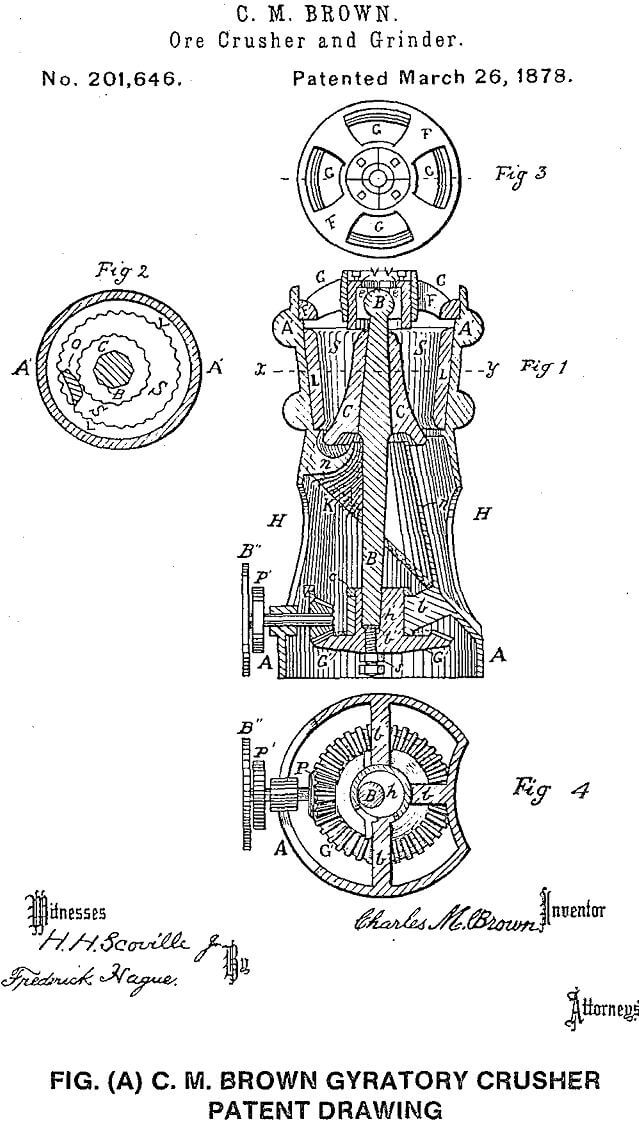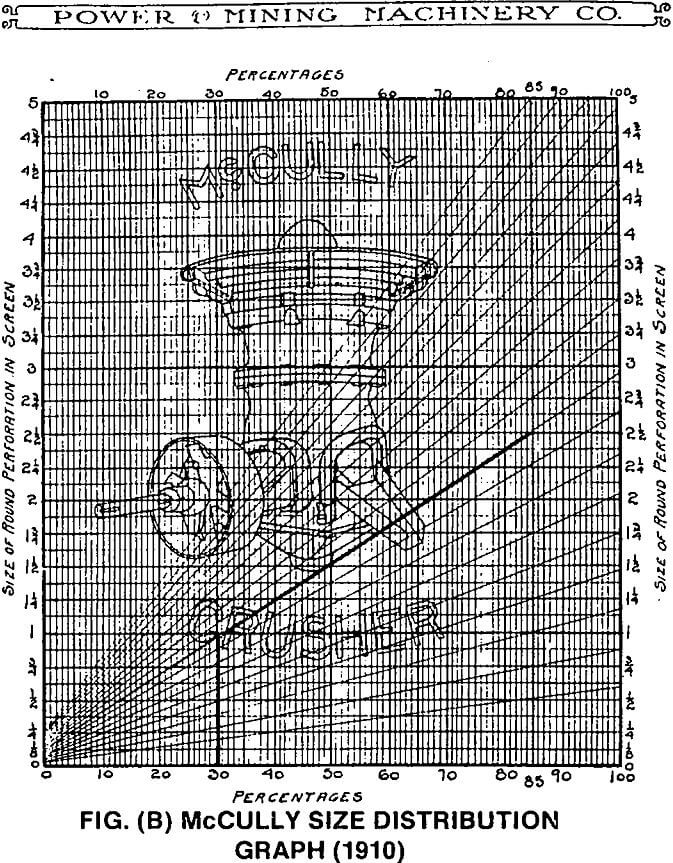 The Allis-Chalmers Corporation was founded in Milwaukee, Wisconsin, in 1847 as the E. P. Allis Company, which had an initial interest in manufacturing components in the grinding of flour. As such, its roots were started in reducing material size, which is covered by the generic term, comminution.
The Allis-Chalmers Corporation was founded in Milwaukee, Wisconsin, in 1847 as the E. P. Allis Company, which had an initial interest in manufacturing components in the grinding of flour. As such, its roots were started in reducing material size, which is covered by the generic term, comminution.
The Corporation evolved by a series of mergers into one of the world’s first conglomerate companies.
Several key equipment suppliers to the mining and cement industries, in the late 19th century, became part of Allis-Chalmers and provided a broad base to build the modern technology we are using today.
Because this publication is recommending new approaches in solving old problems, it seems fitting to reflect on some past history to gauge the progress of our technological innovation. During this historical review it has been surprising to find features on equipment almost 100 years ago that one tends, from today’s perspective, to think are relatively new. Some such developments had to be abandoned because of inadequate technology. The fact that such features existed at that time speaks volumes for the intelligence and inventive genius of the early crusher engineers. Some significant features will be mentioned in the following discussion.
The world’s first truly successful compression type crusher was the Blake jaw crusher, first patented by E. W. Blake in 1858. The machine is still used today. Its greatest weaknesses were that it only crushed during half of the operating cycle, and it had only limited capability to crush fine.
Rotary vertical shaft crushers were under development by Gates Iron Works in Chicago in the 1860’s, and following several aborted attempts the first successful gyratory type crusher was built, similar to the configuration shown in Fig. (A) according to patents issued to Charles M. Brown of Gates in 1878. It should be considered the forerunner of all gyratory and cone type crushers. The first unit was tested on loan to the Kirby & Howe Stone Co. of Iowa.
By January 8, 1881, Gates felt so confident of this new design that he advertised in the “Engineering & Mining Journal” of that date that he had “The Greatest Rock Breaker On Earth,” and guaranteed that the crusher would do double the work of any upright convergent jaw crusher. He also openly challenged any competitor to a competitive trial.
By the turn of the century Gates claimed to have sold well over 4,000 crushers and was a clear leader in the field. They had also developed a spring relief protected machine to prevent problems associated with uncrushable tramp iron, but this was subsequently dropped from the model line.
Fraser and Chalmers, a company founded by two Scotsmen in Montana as a direct result of the Gold Rush around 1850, expanded their mining supply business by setting up in Chicago in 1860. They made Blake type jaw crushers and, ultimately, developed in 1890 the

“COMET” crushing machine, which they claimed was the world’s first adjustable under load gyratory unit.
In the latter part of the 19th century, Robert M. McCully of Philadelphia, Pa., produced the well-known gyratory crusher bearing his name. The machine had the first top suspended crushing shaft, all previous units having bottom shaft support, and great advantages were claimed for this arrangement. Power and Mining Machinery Works in Milwaukee made these machines under an exclusive license early this century.
All of these companies ultimately became part of the Allis-Chalmers conglomerate except the parts of Fraser and Chalmers outside the U.S.A., some of which still operate under that name.
The science of comminution was just getting started in the 1890’s, so the rather brazen claims as to a machine’s superior performance were at the mercy of aggressive marketing people of that era.
Apart from the already quoted advertisement of Gates, for posterity, it is worth quoting an excerpt from Fraser and Chalmers’ “Comet Rock Crusher Catalog No. 6,” which was published in 1897.
The Comet Crusher is particularly adapted to crushing Railroad Ballast and Street Macadam, but we have designed it with sufficient strength to crush also with ease, Ores, Granite, Phosphate Rock, Corundum, Concrete, etc.
Our machines in many instances have been put to the severest possible tests and stood the work nobly.
The most wonderful capacity of this novel crusher is due to its large receiving capacity and easy motion. A car of rock can be dumped directly into the hopper, in fact men find it almost impossible to feed it. One of our No. C crushers working on exceedingly tough rock exceeded the combined efforts of three men to feed it, “fire flying all the while,” as they said, and putting through eight yards of rock in twenty minutes, or say averaging sixteen yards every hour, including all delays, stoppages, etc.
The large Crusher E has put through more than a ton of rock every minute.
For the purposes for which it is designed this Crusher has no equal.
Generally speaking, the manufacturer relied upon letters of testimonial to sell his equipment, and a generous number of these were normally included as part of any crusher catalog.
This same Fraser and Chalmers’ Catalog No. 6 quotes a range of capacities for each size of various machines simply as “Capacity in tons per hour. Size of Macadam.” No definition of particle size was given and naturally there could be little accountability.
The first attempts at defining power and capacity appear in Gates Catalog No. 15, April 1900 edition, where a range of capacities produced through a 2½” ring are quoted for Style D ore breakers, which was qualified “according to the character of the rock.”
A publication, undated, but probably printed about 1901, “McCully’s Improved Rock and Ore Breaker,” quotes capacities stated as being “tons of 2,000 lbs. Macadam or ballast size, 2½ inches” for a range of machines.
Probably one of the first attempts to relate crusher setting, size produced and power required appeared in Power and Mining Machinery Co.’s bulletin No. 4, published in 1910 for the McCully crushers. A graph used in such determinations is shown in Fig. (B).
It would appear that from this point up until the present, little has changed in our methodology concerning crusher application, although computers have been harnessed to speed up our calculating methods.

Application of crushing equipment for the most part has been a “Black Art.”
In the old days, you needed a standard crusher to make coarse particles about 2½ inches (65 mm) and upwards, and a shorthead crusher if you wanted to crush finer. These terms were commonplace in manufacturer catalogs, such as McCully, between 1900 and 1920. Some manufacturers still use such terminology on machines designed since that period.
Clearly there have been substantial improvements to machinery including the application of automatic controls to improve productivity from a crusher. Our knowledge of the way a material behaves under processing conditions has improved immensely.
It seems inappropriate that we still use, basically unchanged, the same 70-year-old application methods for most crushing calculations.
This publication suggests a more fundamentally based method of applying crushing machines in terms of scientifically based energy and size parameters. Hopefully it will contribute to the better understanding of these processes.
Our past experiences are the basis of determining the need for such improved technology.
Research programs conducted by Allis-Chalmers Corporation are showing that the most efficient energy use in crushers is achieved when the forces applied to particles undergoing breakage are increased. Laboratory bench scale tests have been developed to confirm this phenomena, which was first observed in the field using HYDROCONE crushers with automatic setting controls. A new testing machine is described and methods of maximizing such benefits are postulated.
